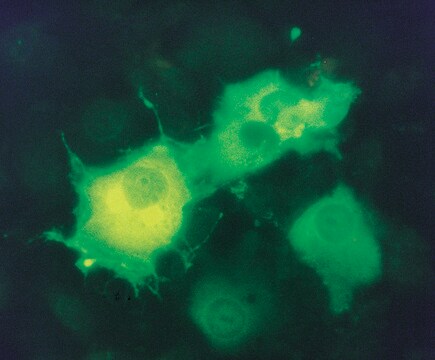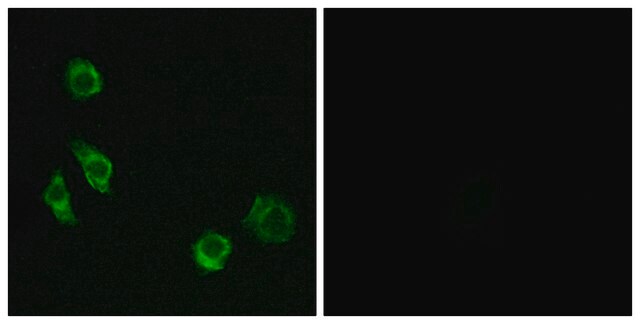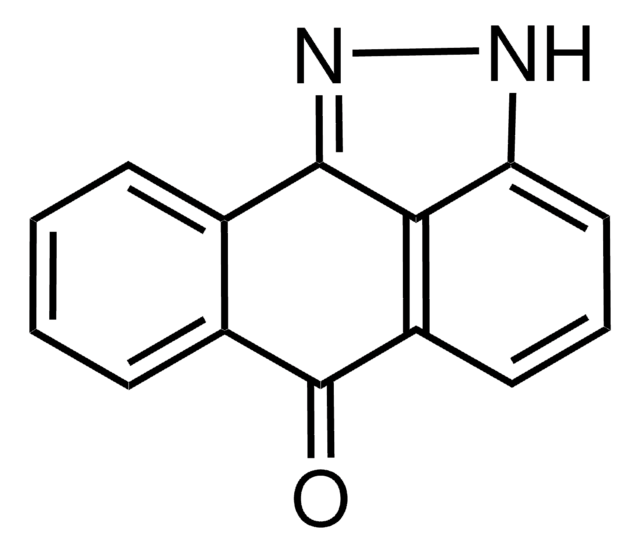MABF2102
Anti-FcRH5 Antibody, clone F56
clone F56, from mouse
Sinónimos:
Fc receptor-like protein 5, FcR-like protein 5, FcRL5, BXMAS1, Fc receptor homolog 5, Immune receptor translocation-associated protein 2, IRTA2, CD307e
About This Item
FACS
ICC
WB
flow cytometry: suitable
immunocytochemistry: suitable
western blot: suitable
Productos recomendados
biological source
mouse
antibody form
purified immunoglobulin
antibody product type
primary antibodies
clone
F56, monoclonal
species reactivity
human
packaging
antibody small pack of 25 μL
technique(s)
ELISA: suitable
flow cytometry: suitable
immunocytochemistry: suitable
western blot: suitable
isotype
IgG1κ
NCBI accession no.
UniProt accession no.
target post-translational modification
unmodified
Gene Information
human ... FCRL5(83416)
General description
Specificity
Application
Western Blotting Analysis: A representative lot detected FcRH5 in Western Blotting applications (Ise, T., et. al. (2005). Clin Cancer Res. 11(1):87-96).
ELISA Analysis: A representative lot detected FcRH5 in ELISA applications (Ise, T., et. al. (2005). Clin Cancer Res. 11(1):87-96).
Flow Cytometry Analysis: A representative lot detected FcRH5 in Flow Cytometry applications (Ise, T., et. al. (2005). Clin Cancer Res. 11(1):87-96).
Quality
Flow Cytometry Analysis: 1 µg of this antibody detected FcRH5 in one million SU-DHL-5 cells.
Target description
Physical form
Other Notes
¿No encuentra el producto adecuado?
Pruebe nuestro Herramienta de selección de productos.
Certificados de análisis (COA)
Busque Certificados de análisis (COA) introduciendo el número de lote del producto. Los números de lote se encuentran en la etiqueta del producto después de las palabras «Lot» o «Batch»
¿Ya tiene este producto?
Encuentre la documentación para los productos que ha comprado recientemente en la Biblioteca de documentos.
Nuestro equipo de científicos tiene experiencia en todas las áreas de investigación: Ciencias de la vida, Ciencia de los materiales, Síntesis química, Cromatografía, Analítica y muchas otras.
Póngase en contacto con el Servicio técnico








